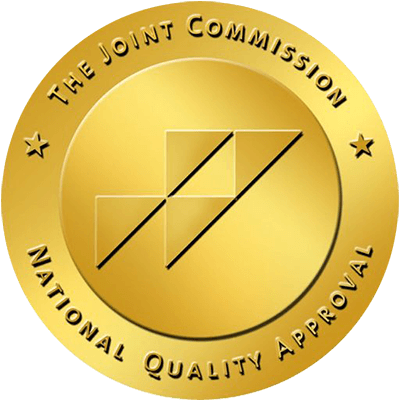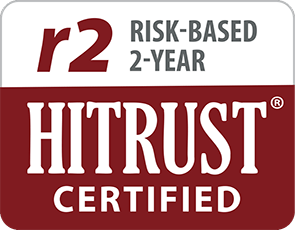Written by Ashley Kane,
Brightside Health
7 Minute Read

Medically reviewed by:
Jen Miller, PMHNP-BC
PMHNP Director
10 Minute Read

When it comes to treating anxiety and depression, there are plenty of different medications available, all of which may affect you in different ways. Gabapentin is just one of the options available today, and building a more complete understanding of this medication may help you figure out whether or not it might be a good fit for you.
Gabapentin is traditionally known for being an anticonvulsant medication. However, clinical studies in recent years have shown gabapentin to be potentially beneficial as a mood stabilizer due to its ability to calm neurons in the brain. It also has shown promise as an aid for managing restless legs syndrome, a treatment for anxiety and hard-to-treat depression, and to manage a condition called postherpetic neuralgia, which is nerve pain that occurs after shingles.
You may be prescribed this medication in addition to other antidepressant medications to help manage your anxiety and/or depression symptoms.
So, let’s talk about the basic details that you should know before giving gabapentin a try.
Want to speak 1:1 with an expert about your anxiety & depression?
1. Gabapentin may be effective for treating depression and anxiety, among other things.
Although gabapentin was traditionally used to treat seizures, it is now sometimes used as a mood stabilizer for depression and bipolar disorder because it calms neurons in the brain, and it may be effective for anxiety too. Clinical trials even found that gabapentin may be a good alternative to benzodiazepine when it comes to treating generalized anxiety disorder. Gabapentin may particularly be beneficial for people who only respond partially to other mood stabilizers.
Another study has demonstrated that gabapentin is effective as adjunctive therapy in people with partial seizures whose seizures are inadequately controlled by the dosing of traditional AEDs. Furthermore, gabapentin is also frequently used as an analgesic in people with kidney disease that causes chronic pain. Although gabapentin is well known for its favorable pharmacokinetics, it is exclusively eliminated through renal excretion, and people with chronic kidney disease are at risk for toxicity.
2. Gabapentin is available in a few different forms.
Gabapentin, (the generic name for Neurontin), was first approved by the Food and Drug Administration in 1993 and designed to mimic the neurotransmitter GABA. As opposed to other medications that may only be available as pills, gabapentin may be available to you in capsule, tablet, or liquid form. Liquid gabapentin can be left at room temperature for up to 56 days. This can be helpful if you tend to have difficulty swallowing pills.
Regardless of what form your medication comes in, you must carefully abide by the proper usage and dosage instructions. Misusing any form of medication can result in uncomfortable, sometimes dangerous, adverse effects, so make sure you follow your provider’s instructions.
Typically, gabapentin should be taken with a full glass of water and can be taken with or without food. Your dosage will depend on your individual needs, and your provider will be able to offer guidance regarding this. That said, gabapentin may be best taken in evenly spaced intervals, but you should always follow your provider’s specific instructions.
3. Gabapentin can have potentially dangerous drug interactions.
Like most OTC medicines or prescription medications, gabapentin, too, can have some potentially dangerous interactions with other drugs and supplements. Because of this, it is highly important to inform your provider of any other medications, and even vitamins or supplements, that you are taking regularly so that harm can be avoided.
Your medication bottle should list potential drug interactions so that you know what to avoid, but if you are not sure whether or not gabapentin is safe to take alongside any other prescriptions you have, you should call your provider before taking a dose of gabapentin.
Additionally, informing your provider of any other medications you are taking can allow them to cross gabapentin off the list of possible medications to try if they know that it will interfere with your other prescriptions.
4. There are certain side effects associated with gabapentin.
Many prescription drugs have the potential to cause some unwanted, but usually minor, side effects, and gabapentin is no different.
Effects of gabapentin can include:
- Drowsiness, tiredness, or weakness
- Dizziness
- Headaches
- Double vision or blurred vision
- Memory problems
- Unwanted eye movements
- Nausea and vomiting
- Heartburn
- Constipation or diarrhea
- Dry mouth
- Increased appetite and weight gain
- Swelling of the hands, feet, ankles, or lower legs
These are just some possible side effects from the use of gabapentin, and if you experience any side effects that become severe or that do not go away with time, you should consult your provider.
Gabapentin can also cause some rare, but more serious, side effects like:
- Rashes
- Itching
- Swelling of the face, tongue, or throat
- Hoarseness
- Difficulty swallowing or breathing
- Suicidal thoughts
If you experience any of these more serious side effects, you should call your provider and seek medical advice immediately.
Withdrawal symptoms may occur if you have been taking the medication for longer than 6 weeks.
Additionally, according to the FDA, if you have a pre-existing respiratory condition, you should avoid anticonvulsant drugs like gabapentin and pregabalin when used with CNS depressants. Even more, life-threatening breathing difficulties can occur in people who use gabapentin or pregabalin with opioids or other drugs that depress the central nervous system, as well.
5. Gabapentin can cause allergic reactions.
Aside from common side effects, it is also possible to be allergic to gabapentin in which case taking this medication may cause an allergic reaction.
If you have never tried gabapentin and do not know whether or not you are allergic to it, a good rule of thumb is to inform your provider of any previous reactions you have had to any kind of medication as well as any allergies to foods, dyes, preservatives, artificial additives, or other allergies. This information can allow your provider to more accurately assess whether or not you are at risk of having an allergic reaction to gabapentin.
6. You may be able to continue your normal diet while taking gabapentin.
Whereas some medications require certain foods to be eliminated from your diet because of the way they may impact the way the medication works in your body, gabapentin may not require you to change your diet at all.
Of course, sometimes there are special circumstances under which a change might need to be made, and if this is the case for you, your provider will inform you. You should always carefully follow your provider’s instructions, but in most cases gabapentin will allow you to continue your normal diet.
7. You may be able to have gabapentin delivered to your door.
Here at Brightside Health, we do medication differently, using precision psychiatry to find the right treatment for your unique needs.
It all starts with you filling out our free online assessment, after which we will assess your situation and match you with a psychiatric provider. From there, you and your provider can come up with a plan tailored to your needs and concerns, and if medication is necessary it will be prescribed. Brightside works with you to help you find a path back to feeling like you again.
You can have your medication safely delivered right to your doorstep. Please note: Prescribing decisions are always at the discretion of the provider who abides by your state’s regulations and restrictions. Brightside’s providers can’t prescribe gabapentin in the following states: Alabama, Kentucky, Michigan, North Dakota, Tennessee, Virginia, or West Virginia.
The bottom line
Even though gabapentin is an anticonvulsant traditionally used to help treat epilepsy and other causes of seizures, recent studies show that prescribing it as a treatment for depression, as mood stabilizer, or to help with neuropathic pain may also be quite effective due to its ability to calm neurons in the brain.
Gabapentin may even be beneficial for people struggling with anxiety, and it may make a safer alternative to benzodiazepines.
Whatever the case may be in your situation, Brightside is here to help provide therapy and psychiatry from board-certified providers, to assist people 18 years of age and older. Our free online assessment provides us with the information we need to accurately assess your needs and concerns and match you with a psychiatric provider who will recommend a treatment plan.
Whether gabapentin is the right choice, or if another medication is better suited for your needs, Brightside can help you get back on track.














